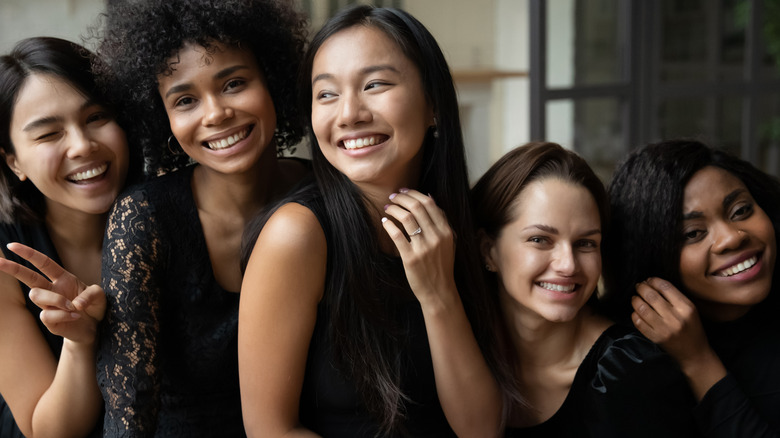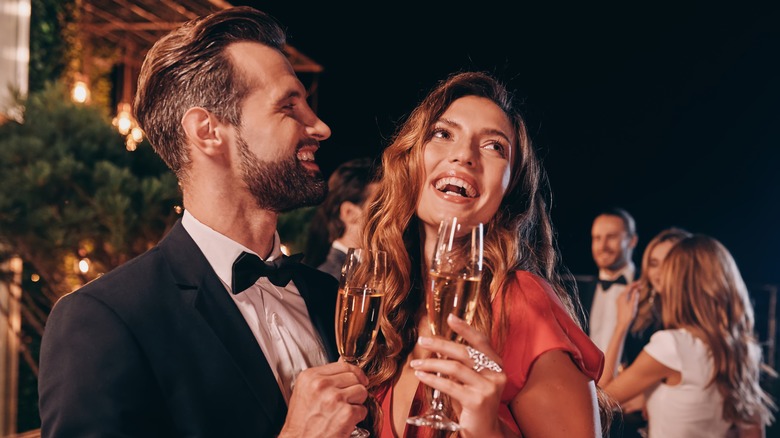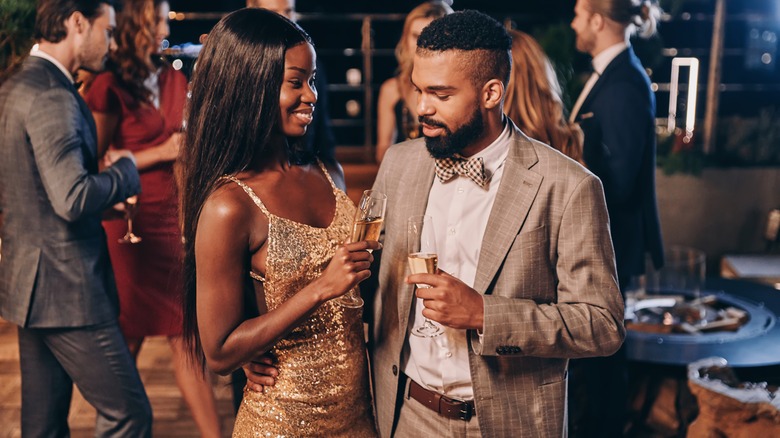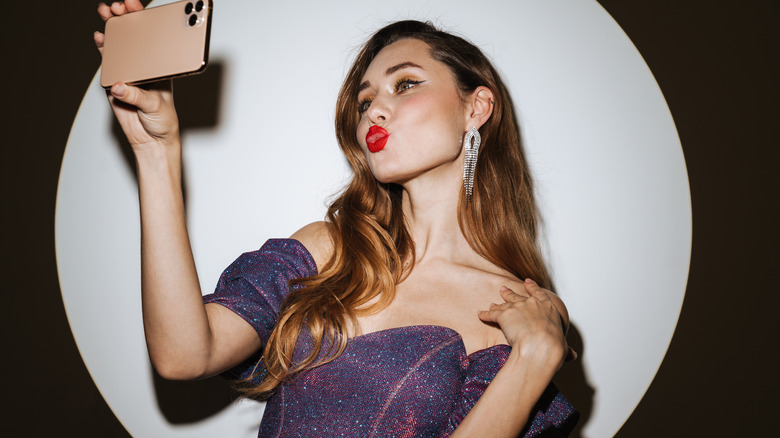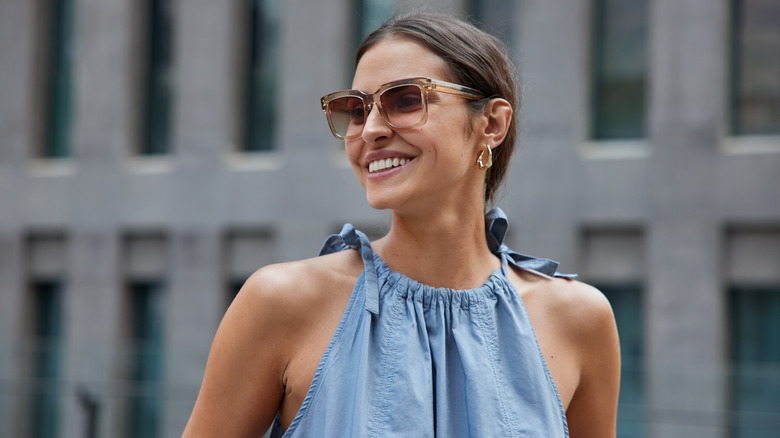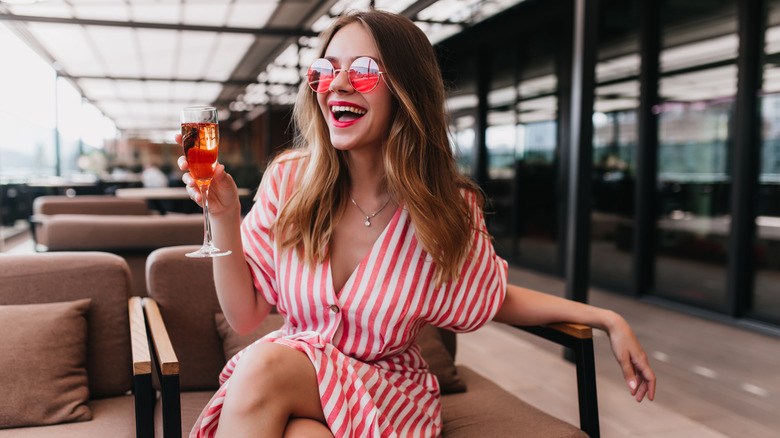Here's The Real Difference Between Wedding Dress Codes
Wedding season is just around the corner, so it's time to dive into your closet and see what you have on hand to wear. After all, most people agree there's nothing like getting together with your loved ones and celebrating your closest friends in marital bliss. "People are excited to dress up, and to celebrate," wedding company creative director Mallory Cheung tells The Kit. "Those intimate home weddings we had for the past two years required less formal attire, but we're seeing a huge decline in this [casual] style of wedding and guest dressing for 2022."
However, choosing the perfect outfit to be memorialized in photos is easier said than done. And although the day is about the happy couple, it's in good taste that their guests show up looking your best, too. "When it comes to what to wear to a wedding, couples are bucking tradition by getting more creative with the attire requests," wedding planner Amy Shey Jacobs tells Insider. And while the added flexibility gives guests more variety in what they can wear, it can also leave people confused as to what counts as acceptable attire.
So, what is the real difference between the most popular wedding dress codes, and what should you wear as a guest for each one? Here's a look at what experts have to say.
Black tie
Of all the wedding dress codes, black tie events require the most formal attire when attending and are the least flexible when it comes to interpretation. You will only dress for a black tie event if the invitation specifies black tie attire — and it will specify. "It will likely be an evening wedding, and you'll want to choose a floor-length gown that goes to at least your ankles," wedding planner Meredith Rebecca shared in a TikTok video.
For men, you'll be expected to wear a nicely pressed tuxedo complete with cufflinks and a tie. And for women, the hemline of your dress should be full-length with an appropriate dress shoe and bag to match. If you're looking for something a little less feminine, a trendy and well-tailored pantsuit is a perfect alternative for wedding guests with a little edge. Still, if opting for a dress, select one that uses a sophisticated fabric like silk, charmeuse, or crepe for a polished and effortless style.
Formal/black tie optional
Formal wedding attire can be tricky to understand. Not quite black tie but still more formal than cocktail attire, this dress code calls for classy elegance that allows for a bit of flexibility. The key difference between black-tie and black-tie optional is that formal attire is a little more relaxed and fun — but still classically chic. Tuxedos aren't required for black tie optional dress codes, so men can feel confident wearing a less formal dark suit, white shirt, and tasteful tie.
For women, the choices are the same as with black tie events, though with some additional options. "[Your dress] doesn't need to be as structured as a gown for a black tie affair, but should still be elegant and regal," bridal stylist Ani Hovhannisyan tells The Wedding Wire. She adds that a-line, Grecian, slinky, or poufy styles are all suitable to wear as long as the hem touches the floor.
Semi-formal or cocktail
Cocktail attire is the gold standard for semi-formal weddings, and it is among the most common dress codes for nighttime weddings that don't include a formal, sit-down meal. This style is more laid-back than the more formal dress codes and allows for more of an expression of your personal style. "This style requires a formal dress with a shorter hemline. It might also be accented with jewelry or a nicer pair of shoes—embellishment is key for a cocktail dress code," wedding style expert Monte Durham tells The Knot.
For women, hemlines can be shorter and accessories can be more playful and fun. And for men, a well-tailored suit in a dark or neutral color like gray, navy, or charcoal is sure to be a winner. Never be afraid to choose bold colors when cocktail attire is requested, either. Get flirty and romantic, and have fun with it.
Daytime or casual attire
Daytime/casual attire sounds the most relaxed, but it can also be the most confusing because of its open-endedness. It's important to note that casual doesn't mean sloppy. In general, daytime weddings are more casual than evening weddings, so lighter fabrics, bright pops of color, and less-formal attire are to be expected. Unlike other dress codes where long, formal gowns are a safe choice, you'll want to avoid anything too flashy or formal for a daytime wedding.
For women, a nice sundress, skirt, top, or romper are all good choices. You can also try opting for a patterned jumpsuit or sleek midi dress to make a statement. "For men, it means you can have more fun with your look," etiquette expert Suzanne Polla tells MarthaStewart.com. According to Polla, this could include sporting a unique tie, cufflinks, socks, or a menswear jacket in a unique material or color.
Beach wedding
The tricky thing about beach formal attire is choosing something that is stylish and appropriate for the venue. "The two biggest differences between beach wedding attire and other wedding dress codes lies in the color palette and footwear," wedding expert Pamela Spence tells Brides. For women, your best (and most breathable) options will be a breezy maxi dress, a tea-length dress, or a funky and fun jumpsuit. Avoid stilettos or heeled shoes that can be a hazard on sandy surfaces, and wear some formal sandals.
For men, it's best to leave the linen at home for tropical destinations; the fabric wrinkles too easily and can look disheveled in pictures if you're not able to press it back out. Instead, consider a different breathable fabric such as khaki or seersucker to help keep you cool. All genders should consider bright colors. Like with casual wear, have fun with this style!
